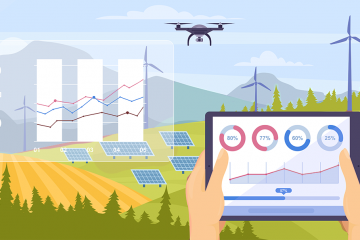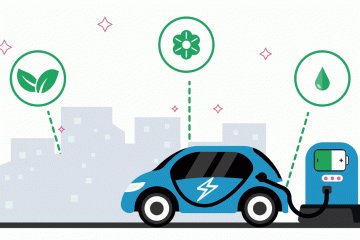Spring season is a pleasant time with warm weather, flowers, and trees blooming. Spring is usually associated with a fresh start but is also known to be the peak allergy season. For many, the beginning of spring can be the onset of seasonal allergies induced by pollen exposure. Pollen is known to impact human health in several ways. It makes understanding pollen, its types, and its sources very important.
Ambee’s pollen API provides pollen data for the world, with new countries being added every week. Our pollen data is easy to integrate into products, mobile apps, marketing, and advertising campaigns. It can help brands generate user awareness with accurate local real-time pollen data with a risk evaluation.
First, let’s understand what pollen is, how it impacts human health, and what you can do to protect yourself from seasonal allergies.
What is Pollen? How it impacts human health?
Pollen is a common allergen. It is a fine powdery residue from trees, flowers, grasses, and weeds that
1 in 5 people worldwide are affected by pollen allergy symptoms in their lifetime. Pollen exposure triggers a severe immune response in those with a pollen sensitivity. The immune system mistakes pollen as a harmful invader like bacteria or virus and starts to fight against the pollen, causing an allergic reaction known as Seasonal Allergic Rhinitis, or commonly known as Hay Fever. Seasonal allergies may during spring but are also common in summer and present year-round.
Few seasonal allergy symptoms include:
- Stuffy nose
- Cough
- Sneezing
- Wheezing
- Itchy eyes
- Fatigue
A single pollen grain is microscopic, making it invisible to the human eye. Pollen data helps visualize pollen presence and quantifies pollen count. Tracking the pollen count in your surrounding areas will help avoid allergic rhinitis and its symptoms. Pollen data helps users be aware of the pollen in their location, types of pollen, and take preventative measures, accordingly.
By 2040, experts predict that pollen count is expected to increase by up to 200%. Pollen allergy is the most common type of seasonal allergy in Europe. Four out of five people who have asthma also experience fall victim for hay fever with seasonal change and year-round.
Another study showed that the risk of childhood asthma varies by the birth month. This study concluded that children with high exposure to allergens like pollen in the first three months of their life experienced asthmatic symptoms like wheezing in their early life.
Bridging the Data Gap: Ambee’s Pollen API
With pollen data, there is a lack of resources that is easily accessible to businesses and the common man. At Ambee, we realized the data gap in this field that affects millions of people every year worldwide and set forth to bring accurate, local, and real-time pollen data to your fingertips.
Our team aggregates data from multiple sources – on-ground sensors, satellite imagery, and statistical inference to ensure high accuracy and availability of the highest order.
Ambee’s Pollen data provides invaluable insights and actionable recommendations. It contains pollen count information for three different pollen types:
- Grass pollen
- Tree pollen
- Ragweed pollen
With the pollen count, the data provides risk evaluation. This will help people plan their outdoor activities and avoid exposure to pollen.
Grass pollen is the most common type of pollen allergen that causes hay fever. Birch tree pollen is the most common airborne allergen as it can travel up to 100 yards. A single birch tree produces up to 5 million pollen grains.
Our pollen API data model is based on vegetation index and weather conditions. These are key factors affecting pollen count in the user location. It helps provide a much more accurate depiction of the raw pollen count to ensure the most accurate data.
5 Simple and Easy Ways to Deal with Seasonal Allergies
Seasonal allergies are caused by exposure to allergens like pollen. Taking the five preventative steps below will help manage pollen
1.
2. Stay Indoors: After monitoring the air for pollen, now you will know the pollen count for your location. During high pollen count, stay in and go out when the pollen concentrations are lower later in the day.
3. Dust and Vacuum Your Surroundings: Dusting and vacuuming your surroundings will remove pollen from your indoor living space. Vacuum cleaners are great for cleaning out the surfaces of your furniture and floor from allergens such as pollen and dust.
4. Keep your Windows Shut: At home or in your car, keep the windows and air vents shut to avoid any pollen to permeate your living area. Also, make sure to regulate the air with air conditioning.
5. Maintain your HVAC Unit: Schedule a maintenance check for your HVAC unit by a professional technician. Make sure they check the air vents and air purifiers for maintenance as needed. Replace the air filters every 2-3 months. Clean the air vents as dust, allergens, and other contaminants can build up over time.
Empower your customers with Ambee’s proprietary data to track and avoid seasonal allergies. Signup now and get access to our Pollen API. Integrate pollen and air quality API into your business for solving problems of your customers is once click away.
This blog was written by Pushya C, Content writer at Ambee.




